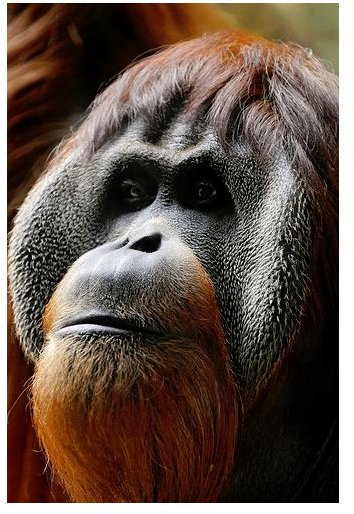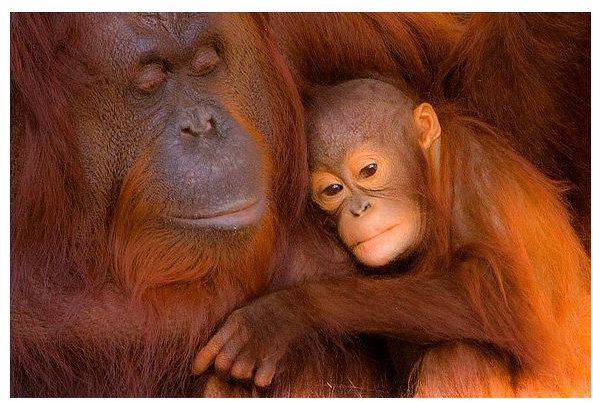Orangutan Facts: Find Information on This Interesting Great Ape
The Orangutan
Orangutans, like humans, are a species of great apes. They are highly intelligent animals with big brains and share 96.4 percent of our genetic makeup. Two species of orangutans exist - Pongo pygmaeus of Borneo and Pongo abelii of Sumatra. The only way they can be differentiated outside of their native range is through chromosomal or DNA analysis. The Malay word orang means “person” and utan, derived from hutan means “forest”, thus meaning “person of the forest”. They are the largest tree-dwelling animals in the world. Continue reading for more interesting orangutan facts.
Description

The orangutan is Asia’s largest primate. They stand about 4 to 5 feet tall and weigh between 90 and 200 pounds. Males are larger than females. The males also have longer hair than females which is orangish-red in color. Their arm span is longer than their height, which can reach up to seven feet. Their long arms and curved feet and hands allow them to move through the trees with ease. Males develop large cheek pads, which the females find attractive, at about the age of 15 years.
Habitat
In the past, orangutans lived throughout Southeast Asia, southern China and on the island of Java. Now they are found only on the Southeast Asian islands of Borneo and Sumatra. They live in tropical rainforests at altitudes of less than 3,281 feet above sea level.
Behavior
Unlike other apes, orangutans are more solitary. About the only time they encounter one another is when mating or sharing a fruiting tree. They spend roughly 90 percent of their time in trees. They walk on all fours when on the ground and unlike the African apes, they use their palms or fists instead of their knuckles. Males will move through the forest making loud howling calls, which can be heard 1.2 miles away, to ensure they stay out of each other’s way. They are active during the day and at night, they will build a nest by bending branches into a platform for them to sleep on in the trees. To protect themselves from the rain and sun they will make a shelter from leafy branches, and they are even known to use large leaves as umbrellas or ponchos.
Diet
About 90 percent of the orangutan’s diet consists of fruit, including durians, mangos, jackfruits, figs and lychees. The remainder of their diet is leaves and shoots, and occasionally they will eat tree bark, soils rich in minerals, fungi, honey, nectar, insects and small animals.
Reproduction
Females become sexually mature at around 10 years of age but don’t have their first offspring until they are 15 to 16 years of age. Their menstrual cycle is about 30 days, and they menstruate for three to four days. They give birth, normally to a single offspring, only once every eight years. Apart from humans, this is the longest time period of any animal. The gestation period lasts 8 1/2 months, and the baby orangutan will weigh about 4 pounds at birth. Babies will stay with their mothers for about seven years, before the next offspring comes along. Bornean and Sumatran orangutans can breed with one another and produce viable offspring.
More Information
The following are more interesting orangutan facts:
• When males fight among each other, they sometimes resemble Sumo wrestlers.
• They have opposable thumbs and big toes like humans but about one third of them do not have nails on their big toes.
• Orangutans have been known to untie boats and ride them across the river which they learned by watching villagers.
• They live up to 40 years in the wild and 60 years in captivity.
• The Bornean species is considered endangered, and the Sumatran species is considered critically endangered mostly due to loss of habitat (80 percent of their habitat was lost in the last 20 years).
References
National Geographic: https://animals.nationalgeographic.com/animals/mammals/orangutan/
Orangutan Foundation International: https://www.orangutan.org/
Smithsonian National Zoological Park: https://nationalzoo.si.edu/Animals/Primates/Facts/FactSheets/Orangutans/default.cfm
Orangutan Foundation: https://www.orangutan.org.uk/downloads/kidsfactsheet.pdf
